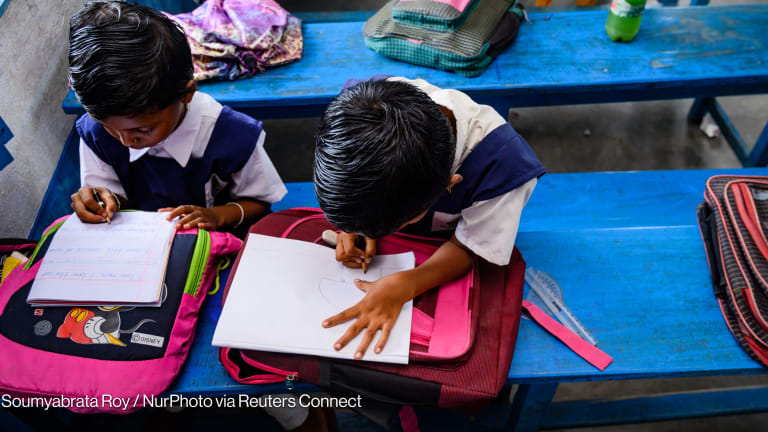
Perhaps, no one better understands women best than a woman: their needs, their value and the role they play in development.
Kshama Metre was working as a pediatrician when she decided to do development work in the villages of Hichamal Pradesh, India, in 1985. Twenty-seven years later, she is now reaping the rewards — nationally and internationally. She received the fourth-highest civilian award in India, the Padma Shri Award, in 2008 for her social work.
The organization Metre founded, the Chinmaya Organization for Rural Development, has been regarded as having been successful in improving the lives of women in rural India. And Metre told Devex in a recent interview that she was the “first beneficiary of the program.”
“I have received more than I’ve given. I’ve received so much from everyone,” she said.
Metre shared the challenges she faced upon working in the villages, and explained what the international community needs to understand about women and how microcredit alone should not be seen as the answer to ending poverty.
What was the first challenge you encountered when you decided to work in the villages and how did you cope with it?
There’s just not one challenge. From the city to the village, there is almost nothing on which to work with. That’s the first big challenge. The second, you are alone there with no other trained person. And there are many villages that are inaccessible. One needs to walk quite a lot before you reach those villages.
Those were the initial challenges. Then once you begin to work with the very poor and marginalized people, it became evident to me that just an isolated health program was not going to make much of a difference. I learned and I saw that the very poor have multiple problems that imprison them. The negative influences of these various issues in their lives pull them down. So unless we have a program that is comprehensive, integrated and is able to address the various issues, then we would not be making much of a dent with just one health program. The vicious cycle of ill health and poverty will continue. I could give them a lot of medicines and advice, but really I have not made much of a change in their lives.
[Another challenge is] there are people who are unaware of how government programs are running to reach out to them. One had to work with the people, [put them at the] center of the programs and work with them to assess, analyze, prioritize their problems. See which are the ones that they could reasonably do something about, within the context of what was available, and the others for which they would need a lot of training and help from people like us.
So gradually, we began to form community-based organizations — first of the women, then men, youth, adolescent girls and children. And work with them at the center of everything to look at the issues so that the program became more and more people-centric and driven by people’s demands.
Since we formed the nature of the program, it gradually became very integrated, addressing issues of not only health, sanitation, hygiene and nutrition, but also addressing issues of livelihood and resources. So many things started happening once people got involved, and funding for our program came from the beneficiaries who became our resource person, because they could relate very well as they had emerged out of their own difficulties.
Women are at the heart of CORD’s programs. How can the success of these programs convince other countries that women have an important role to play in development?
First thing every one of us have to realize is that the number of hours that women contribute — by their work and labor — is much more than men’s. They may not be earning real cash in hand, but their hidden contribution to the economy of any country is pretty huge.
All women, even if they are living in their homes and doing their domestic chores — that include looking after livestock, looking after a lot of the agriculture work — they don’t get paid directly, but they are doing things for their home.
So people need to realize the real truth — that women are doing a lot of work. But they have not received the status that they need. If you ask a woman who is staying home what are you doing, she’d say I’m doing nothing. But actually, when you ask her again, please tell me what you’re doing from early morning 5 a.m. till 11 p.m. when you retire. She’ll tell you so many things that you’ll be stunned. So we have to make them realize that they have to change their own image. Then the people around them, men and women who pull women down, need to learn this, understand it, acknowledge it, recognize it and use the hidden potential of women.
CORD supports self-help groups, which involve women and which have met a lot of success in India. Do you see this as key to ending poverty in India and perhaps in other developing countries?
You see, it’s not so simple as to say that accessibility to microcredit will solve all problems. It’sdefinitelya step to go ahead … microcredit being available to women. The next step is to make them see what are the things that they could do with that money, decide the daily essential needs and get into some kind of income generation. It may not be just microcredit, you have to start talking to them about their health, their education, their livelihood opportunities, their participation in local self-governance. It’s everything.
Do you see yourself working in the villages, doing the same thing in the next 27 years?
I don’t want to live like that. I’m already 62 years old. But I would like to die with my boots on.
Read our last 3 Questions.








